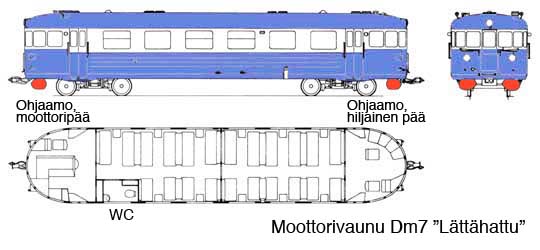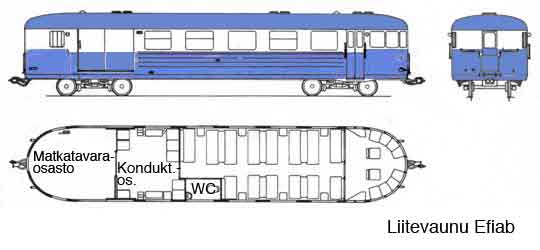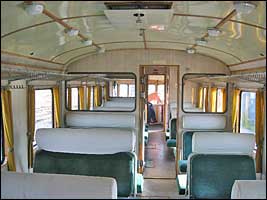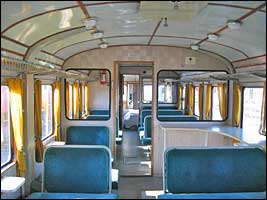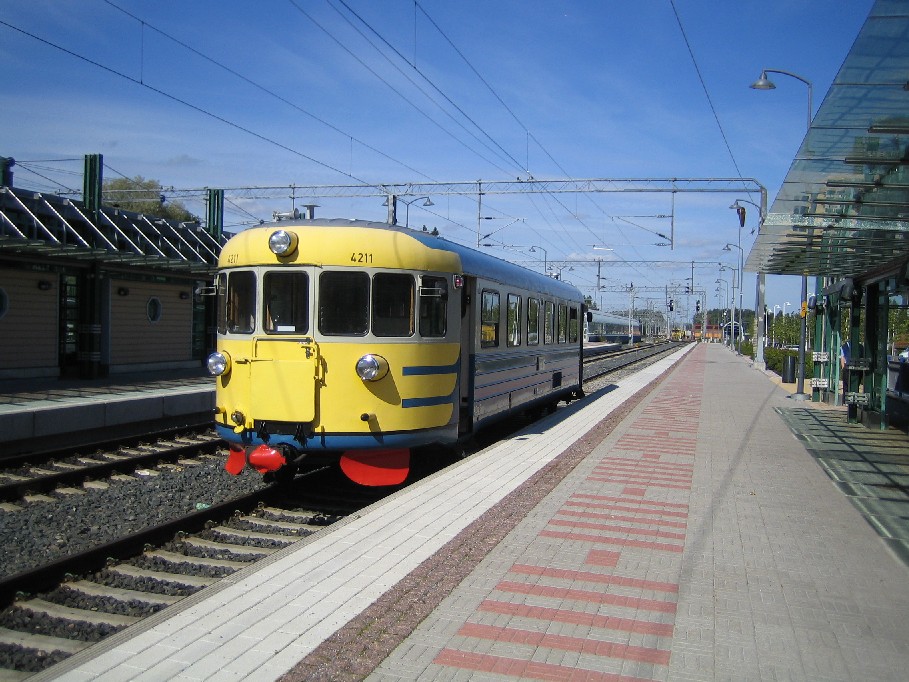The 1960s were golden ageThe 1960s was the golden age of railcars. Almost all railway sections in Finland had railcars. There were frequent stops and there were also unofficial stops. Rural citizens were served. We were able to go to work, shops, travel and visit relatives. The increase in the number of cars and migration from the countryside to the cities reduced the number of passengers in the 1970s. The sustenance of the local transport network covering the whole of Finland became expensive, and traffic was reduced in the 70s and again heavily in the early 80s. The arsenal was also outdated by the end of the 80s, when they wanted to get rid of it completely. Railcar service ended in 1988 and cars retired. Locomotive-driven local trains partially replaced railcars in the 1980s and 1990s. The new arrival of the railcar took place in 2005, when VR started operating on quieter sections of the track. Cheerful workhorseThe Porvoo museum railway association has saved and renovated a number of railcars from the 1950s, which look quite youthful for their age - and which run briskly like they used to in the days of their youth. The association's trainMotorcar, class Dm 7, diesel multiple unit: nos. 4207, 4211 seats 56 + 6 and no. 4163 seats 50 + 6 + serving table.
Trailer, class Efiab no. 11592, seats 36 + 10.
The interior of a motorcar.
The interior of motorcar 4163 has a serving table.
Technology and structureThe wagons were manufactured under license at the Valmet aircraft factories in Tampere. The Swedish YCo4 railbuses have been the model for Finnish railbuses. Certain parts have been foreign made. The carriages have a steel-framed body, which is clad on the inside with a laminate-surfaced board. There is a thermal insulation in between. The motorwagon is heated by the engine's water circulation and air heating. There is air heating in trailer. Summertime ventilation is arranged with crank windows and trap doors. Railbus engines are manufactured at the Valmet factories in Nokia (now Agco Power) based on the Swedish railbus engine: Scania-Vabis D815. Valmet's engine is a non-supercharged straight-eight (180 hp), surprisingly named 815D. It is direct injected with a CAV injection pump. Valmet's engine differs from Scania's mainly in that its dimensions differ from the Swedish one. The power of the engine is transmitted to the undercarriage wheels via the transmission shaft and its gears. The power transmission has a four-speed compressed air controlled planetary gearbox made by the English Wilson. It was easy to form trains of different lengths from the railcars according to the needs of the number of passengers. In addition, it was common for the train to be split in two at crossing stations and the halves continued in different directions. The maximum number of wagons was eight in practice, although ten was allowed. The engine driver drives the train using the control devices on the driving table. Control actions are transmitted electronically to all wagons, where electrically operated compressed air valves and actuators perform the tasks defined for them. Electrical system 24 V. The maximum speed of the railbus is 95 km/h, in museum train use 80 km/h.
Railcar in Kerava in August 2005. |
Lisää pääkuvan päälle tekstiä klikkaamalla ratas-ikonia,
joka ilmestyy tuodessasi hiiren tämän tekstin päälle.


